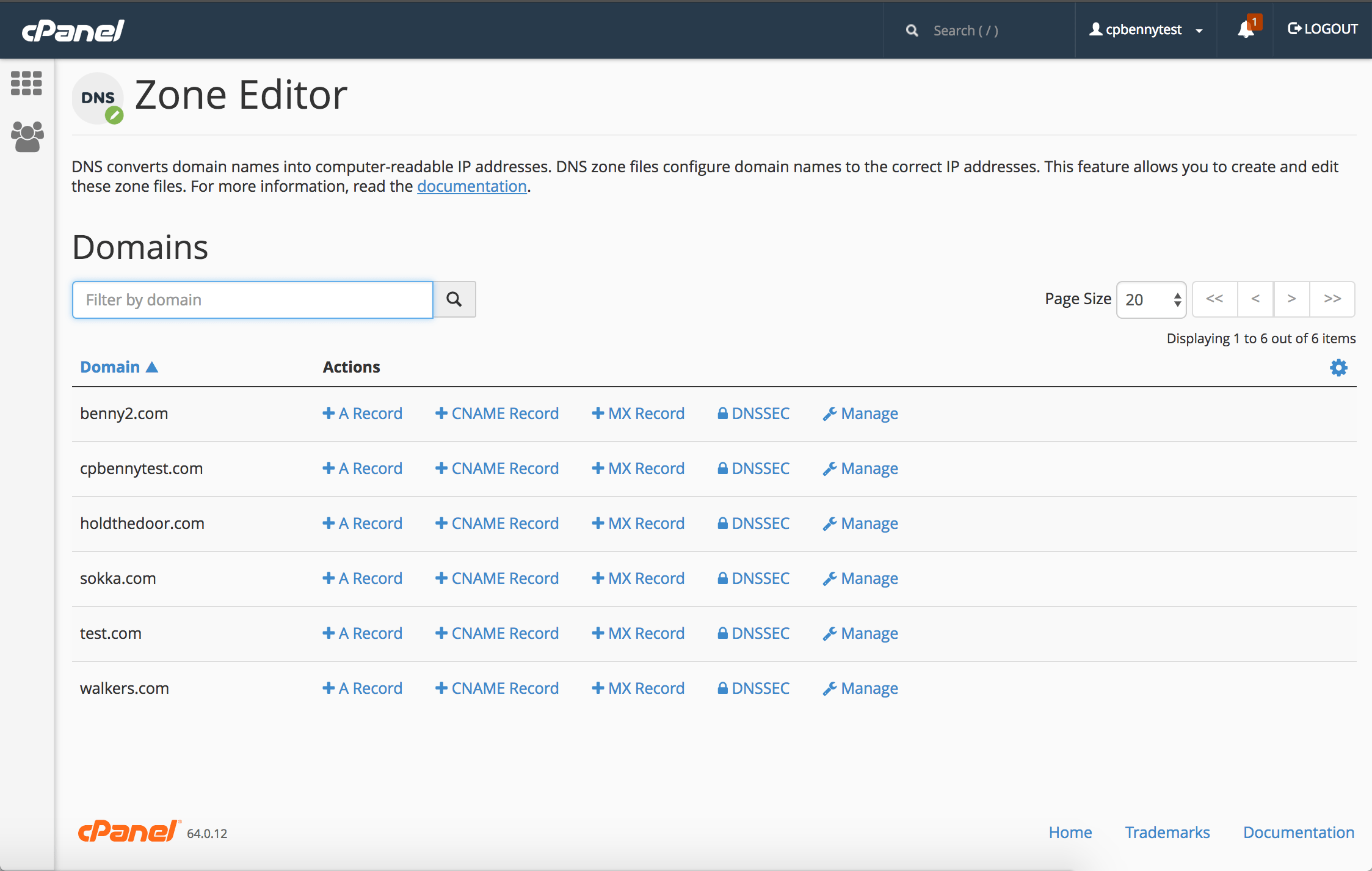Understanding the Role of DNS in Website Configuration
DNS (Domain Name System) plays a crucial role in website configuration, acting as the internet’s directory. It serves as a bridge between user-friendly domain names, such as www.example.com, and the corresponding IP addresses, which are the numerical identifiers that web servers use to communicate with each other. When a user types in a domain name in their web browser, the DNS system steps in to translate that domain name into an IP address, enabling the connection between the user’s device and the desired website. Essentially, DNS acts as the backbone of the internet, ensuring smooth navigation and accessibility for websites worldwide.
By effectively managing DNS settings, website owners can take control over the way their websites are accessed and experienced by users. DNS configuration allows website owners to make changes and updates related to domain names, subdomains, email services, and other associated records. For example, website administrators can redirect traffic to a different domain or IP address, manage email servers for their domain, or create subdomains to organize website content. Understanding the role of DNS in website configuration empowers website owners to make informed decisions and optimize their online presence for both performance and security.
Exploring the Functionality of cPanel’s DNS Zone Editor
The DNS Zone Editor in cPanel is a powerful tool that allows website owners to manage and configure their domain’s DNS settings. With this functionality, users can easily add, modify, or delete DNS records for their domains. The editor provides an intuitive interface that simplifies the process of managing DNS settings, making it accessible to both beginner and advanced users. It allows users to create various types of DNS records, including A, CNAME, MX, TXT, and more, ensuring that all necessary records are in place for the proper functioning of the website.
In addition to managing basic DNS records, the cPanel DNS Zone Editor also offers advanced features to optimize website performance. Users can configure caching settings, set up domain aliases, and implement wildcard subdomains to efficiently handle incoming requests. Furthermore, the editor allows users to control DNS TTL (Time to Live) values, which determine how long DNS information is cached by DNS resolvers. This flexibility empowers website owners to fine-tune their DNS settings to improve website speed and reliability. With the functionality of cPanel’s DNS Zone Editor, users can easily take full control of their domain’s DNS configuration, ensuring a seamless and optimized website experience for their visitors.
Configuring DNS Records to Optimize Website Performance
When it comes to optimizing website performance, configuring DNS records plays a crucial role. DNS (Domain Name System) records translate domain names into IP addresses, allowing users to access websites by typing in a familiar URL instead of a string of numbers. By fine-tuning these DNS records, website owners can significantly improve their website’s speed and responsiveness.
To optimize website performance, one key step is to reduce DNS lookup times. When a user visits a website, their browser needs to retrieve the IP address associated with the domain name through a DNS lookup. This process can introduce delays if the DNS lookup takes too long. By minimizing the number of DNS lookups required to load a webpage, website owners can greatly enhance the user experience. This can be achieved by utilizing techniques such as DNS caching, consolidating multiple domain names into a single IP address, or implementing Content Delivery Networks (CDNs) that use Anycast DNS to route requests to the closest server.
Implementing Advanced DNS Settings for Domain Redirection
When it comes to domain redirection, implementing advanced DNS settings can be an effective way to seamlessly redirect visitors from one domain to another. By configuring DNS records, website owners can ensure that any requests made to the original domain are automatically redirected to the new destination. This is particularly useful in cases where a website undergoes rebranding or when multiple domains need to be consolidated into a single domain. By directing traffic to the new domain, website owners can ensure a smooth transition for their visitors and maintain the continuity of their online presence.
One of the key advanced DNS settings for domain redirection is the use of the DNS CNAME record. The CNAME record, also known as the Canonical Name record, allows website owners to create an alias for a domain or subdomain. By setting up a CNAME record, website owners can redirect traffic from the original domain to the new destination without changing the domain name itself. This not only helps in retaining the brand identity but also ensures that any links or bookmarks pointing to the original domain continue to function correctly. Implementing advanced DNS settings for domain redirection through the use of CNAME records offers flexibility and control, allowing website owners to easily manage and redirect traffic to new destinations while maintaining the integrity of their online presence.
Managing Subdomains and Alias Records in cPanel
Users who are looking to efficiently manage their subdomains and alias records in cPanel will find that the platform offers a comprehensive set of tools and features. With cPanel’s user-friendly interface, creating and managing subdomains becomes a straightforward process. Subdomains can be added with just a few simple clicks, allowing website owners to easily organize and categorize different sections of their website. Additionally, cPanel provides the option to set document roots for each subdomain, enabling users to tailor their content and functionality to specific subdomains, enhancing user experience and overall website management.
In addition to subdomains, cPanel also allows users to create alias records. Alias records are an effective way to redirect traffic from one domain to another. This can be particularly useful when a business has multiple domain names that all need to lead to the same website. By creating alias records, website owners can consolidate their online presence and simplify their marketing efforts. With cPanel’s DNS Zone Editor, users can easily configure and manage alias records, ensuring a seamless and efficient redirection of traffic. Whether it’s merging multiple domains or redirecting subdomains, cPanel provides a hassle-free experience for managing subdomains and alias records, making it an invaluable tool for website configuration and optimization.
Securing Your Website with DNSSEC in cPanel
DNSSEC (Domain Name System Security Extensions) is a crucial protocol for enhancing the security of your website. By implementing DNSSEC in cPanel, you can protect your domain’s DNS data from tampering and ensure the integrity of your website’s name resolution process. With DNSSEC, an additional layer of security is added by digitally signing the DNS records, which allows visitors to verify that the information they receive is authentic and hasn’t been compromised along the way.
To enable DNSSEC in cPanel, you first need to ensure that your domain registrar supports this security protocol. Once confirmed, you can navigate to the “Zone Editor” section in cPanel and locate the domain for which you want to enable DNSSEC. From there, you can generate the necessary DNSSEC keys and enable the signing of your DNS records. It’s important to note that DNSSEC may introduce extra complexity to your DNS management, so make sure to keep the keys secure and monitor the signing process to ensure uninterrupted functionality. By implementing DNSSEC in cPanel, you can reinforce the security of your website and protect it from potential DNS-based attacks.
Troubleshooting Common DNS Issues in cPanel Configuration
Troubleshooting common DNS issues in cPanel configuration can be a complex task, especially for those who are not familiar with the intricacies of DNS settings. One of the most common issues that users may encounter is incorrect or missing DNS records. This can result in websites not being accessible or emails not being delivered correctly. To resolve this issue, it is important to double-check the DNS records and ensure that they are set up correctly. It is also advisable to review any recent changes that may have been made to the DNS settings, as these could be the cause of the problem. In some cases, simply refreshing the DNS cache or waiting for the changes to propagate can resolve the issue. However, if the problem persists, it may be necessary to seek further assistance from a DNS expert or the cPanel support team.
Leveraging DNS Clustering for High Availability and Load Balancing
DNS clustering is a powerful technique used to ensure high availability and load balancing for websites. By distributing DNS servers across multiple locations and connecting them in a cluster, organizations can enhance the reliability and performance of their websites. Clustering allows for redundancy, meaning that if one server fails, another server within the cluster can seamlessly take over. This prevents downtime and ensures that visitors can always access the website without interruption.
Furthermore, DNS clustering facilitates load balancing by distributing incoming traffic across multiple servers. This is particularly beneficial for high-traffic websites that may experience heavy loads at peak times. By spreading the load across several servers, clustering helps to maintain optimal performance and prevent any single server from becoming overwhelmed. It also offers scalability, as additional servers can be added to the cluster as needed to accommodate increased traffic demands. Overall, leveraging DNS clustering for high availability and load balancing is a crucial strategy for organizations seeking to ensure a seamless user experience and minimize any disruptions to their online presence.
Integrating External DNS Services with cPanel
Integrating external DNS services with cPanel can offer website owners more flexibility and control over their domain management. By syncing cPanel with third-party DNS providers, users can easily manage their DNS records and make necessary updates without the need for manual configuration. This integration allows for the seamless transfer of DNS data between the external service and cPanel, streamlining the process and reducing the chances of error. This is particularly beneficial for those who already have an established DNS infrastructure and prefer to continue using their preferred DNS provider while still fully utilizing cPanel’s website management capabilities.
One of the key advantages of integrating external DNS services with cPanel is the ability to leverage advanced features offered by third-party providers. These DNS services often offer additional functionalities, such as advanced security measures, DNS clustering, load balancing, and global traffic routing. By integrating these services into cPanel, website owners can take full advantage of these features without the need for complex manual configurations. This integration also allows for easy management of DNS records, such as adding or updating subdomains and aliases, making it a convenient solution for those seeking a comprehensive and efficient DNS management system.
Best Practices for DNS Management in cPanel
When it comes to DNS management in cPanel, there are several best practices that can help ensure the smooth operation and optimal performance of your website. Firstly, it is essential to regularly review and update your DNS records. This includes removing any outdated or unnecessary records and ensuring that all records accurately reflect your website’s current configuration. By regularly auditing your DNS records, you can prevent potential issues and minimize any potential downtime or errors.
Another best practice is to implement proper security measures for your DNS settings. This includes enabling DNSSEC (Domain Name System Security Extensions) in cPanel. DNSSEC adds an additional layer of security by digitally signing DNS records, making them more resistant to tampering and unauthorized access. By enabling DNSSEC, you can protect your website and its visitors from potential DNS attacks and ensure the integrity of your DNS data.
What is DNS and why is it important in website configuration?
DNS (Domain Name System) is responsible for translating domain names into IP addresses, allowing users to access websites using easily understandable domain names. It is crucial in website configuration as it ensures proper routing of traffic to the correct destination and enables services like email delivery and domain redirection.
How does cPanel’s DNS Zone Editor function?
cPanel’s DNS Zone Editor is a tool that allows users to manage DNS records for their domains. It provides an interface where users can add, modify, or delete DNS records such as
How can DNS records be configured to optimize website performance?
To optimize website performance, it is recommended to set up proper caching mechanisms by configuring TTL (Time to Live) values for DNS records. Additionally, utilizing CDN (Content Delivery Network) services can distribute website content across multiple servers globally, reducing latency and improving load times.
What are advanced DNS settings for domain redirection in cPanel?
Advanced DNS settings in cPanel allow for domain redirection using techniques such as 301 redirects, URL masking, or setting up CNAME records. These settings enable website owners to redirect traffic from one domain to another, ensuring seamless user experience.
How can subdomains and alias records be managed in cPanel?
In cPanel, subdomains and alias records can be managed through the DNS Zone Editor. Users can create subdomains, point them to specific directories, and set up alias records to redirect traffic from one subdomain to another or to the main domain.
What is DNSSEC, and how can it secure a website in cPanel?
DNSSEC (Domain Name System Security Extensions) is a set of security protocols that adds an extra layer of protection to DNS information. By implementing DNSSEC in cPanel, website owners can ensure the authenticity and integrity of DNS records, preventing DNS spoofing and other malicious attacks.
How can common DNS issues in cPanel configuration be troubleshooted?
Common DNS issues in cPanel can be troubleshooted by checking DNS records for errors or inconsistencies, verifying that the correct nameservers are assigned, and ensuring that DNS propagation has completed. Clearing local DNS caches and reaching out to the hosting provider’s support team can also help resolve such issues.
What is DNS clustering, and how does it enhance high availability and load balancing?
DNS clustering involves distributing DNS servers across multiple locations, increasing redundancy and fault tolerance. By utilizing DNS clustering in cPanel, website owners can achieve high availability and load balancing, ensuring that traffic is efficiently distributed to multiple servers, enhancing performance and reliability.
How can external DNS services be integrated with cPanel?
External DNS services can be integrated with cPanel by modifying the nameserver records to point to the DNS service provider’s nameservers. This allows the external DNS service to manage DNS records for the domain while still utilizing cPanel’s other features for website management.
What are some best practices for DNS management in cPanel?
Some best practices for DNS management in cPanel include regularly reviewing and updating DNS records, setting appropriate TTL values, implementing DNSSEC for added security, ensuring DNS redundancy through clustering, and monitoring DNS performance and resolving any issues promptly.




